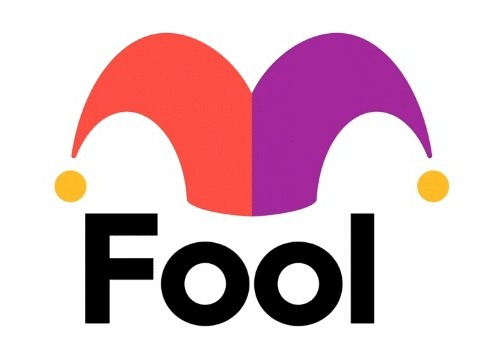Many people seem to work until their 60s, putting some money away for retirement and hoping for the best — that with their savings and Social Security, they’ll be OK. That’s not a great approach, because they could be making gobs of mistakes that will cost them dearly in the future.
Here’s a roundup of some smart and not-so-smart things to do as you plan for your financial future — things that can either turbocharge or tank your retirement.
Where to invest $1,000 right now? Our analyst team just revealed what they believe are the 10 best stocks to buy right now. See the 10 stocks »

Image source: Getty Images.
How to tank your retirement
Let’s start with mistakes to avoid:
- Not having a comprehensive retirement plan. Each of us should be taking some time to figure out how much we’ll need to retire with and how we’ll get it.
- Not saving and investing enough. Don’t assume that some general rule, such as saving 10% of your income or saving 10 times your annual salary, will serve you well. Crunch your own numbers to see what you will need.
- Quitting too soon. Don’t quit until you’re quite confident that you’ll have enough income in retirement. Remember that you might live until age 90 or beyond, which can require a lot of savings.
- Not factoring healthcare costs into your plans. According to Fidelity, a 65-year-old person retiring in 2024 could expect to spend $165,000, on average, on medical and healthcare expenses throughout their retirement — not including long-term care, over-the-counter medications, and most dental services. A married couple should assume an average cost of $330,000. So read up on ways to keep healthcare costs in check in retirement.
- Borrowing or withdrawing from your retirement accounts before you retire. Yes, you may be able to borrow from your 401(k) account, but that’s usually not a great thing to do. Borrowing or withdrawing early from your 401(k) can shortchange your future financial security.
- Investing ineffectively. If you’re chasing hot stocks without much success or have most of your money in slow-growing bank accounts, you may not be amassing the wealth you need. Read up, to see what investing strategy is best — and perhaps favor the stock market for long-term investments. A simple, low-fee index fund such as the Vanguard S&P 500 ETF (NYSEMKT: VOO) can be all you need.
How to turbocharge your retirement
Here are some smart moves that can deliver a more comfortable retirement:
Save aggressively and invest effectively
The table below shows how much you might amass over time if your money grows at 8%. For context, the S&P 500 has averaged annual gains of around 10% over many decades — including dividends and not including the effect of inflation. So just sticking to an S&P 500 index fund over long periods is likely to serve you well.
|
Growing at 8% for |
$7,500 invested annually |
$15,000 invested annually |
|---|---|---|
|
5 years |
$47,519 |
$95,039 |
|
10 years |
$117,341 |
$234,682 |
|
15 years |
$219,932 |
$439,864 |
|
20 years |
$370,672 |
$741,344 |
|
25 years |
$592,158 |
$1,184,316 |
|
30 years |
$917,594 |
$1,835,188 |
|
35 years |
$1,395,766 |
$2,791,532 |
|
40 years |
$2,098,358 |
$4,196,716 |
Source: Calculations by author.
Work a few more years
If you’re planning to retire at, say, age 62 or 65, consider tacking on a few more years of work. Doing so will enable you to sock away more money and will let your money grow for more years. It will also mean your nest egg will have to support you for fewer years.
Make good use of tax-advantaged retirement accounts
These include IRAs and 401(k)s — which in turn come in traditional and Roth varieties. Traditional accounts offer an upfront tax break, shrinking your taxable income. Roth accounts will let you withdraw funds in retirement tax-free, if you follow the rules.
Set up multiple retirement income streams
Don’t just count on any one source of income, as it might not deliver as expected. Even Social Security faces a shortfall. So try to have multiple income streams, perhaps something like this:
|
Income source |
Annual income |
|---|---|
|
Social Security |
$30,000 |
|
Dividends from stocks |
$20,000 |
|
IRAs and 401(k)s |
$10,000 |
|
Fixed annuity |
$20,000 |
|
TOTAL |
$80,000 |
Your own arrangement might be quite different, perhaps excluding fixed annuity income and including rental income from real estate or income from a side gig.
Make savvy Social Security decisions
When you start collecting Social Security makes a big difference, resulting in bigger or smaller checks. You can start collecting as early as age 62, but for most of us, age 70 is the best age at which to claim your benefits, if you want to maximize them.
As you prepare for your future, the most important thing to do is to have a solid retirement plan and to keep saving and investing for many years.
The $22,924 Social Security bonus most retirees completely overlook
If you’re like most Americans, you’re a few years (or more) behind on your retirement savings. But a handful of little-known “Social Security secrets” could help ensure a boost in your retirement income. For example: one easy trick could pay you as much as $22,924 more… each year! Once you learn how to maximize your Social Security benefits, we think you could retire confidently with the peace of mind we’re all after. Simply click here to discover how to learn more about these strategies.
View the “Social Security secrets” »
Selena Maranjian has no position in any of the stocks mentioned. The Motley Fool has positions in and recommends Vanguard S&P 500 ETF. The Motley Fool has a disclosure policy.
 benzinga.com
benzinga.com fool.com
fool.com



